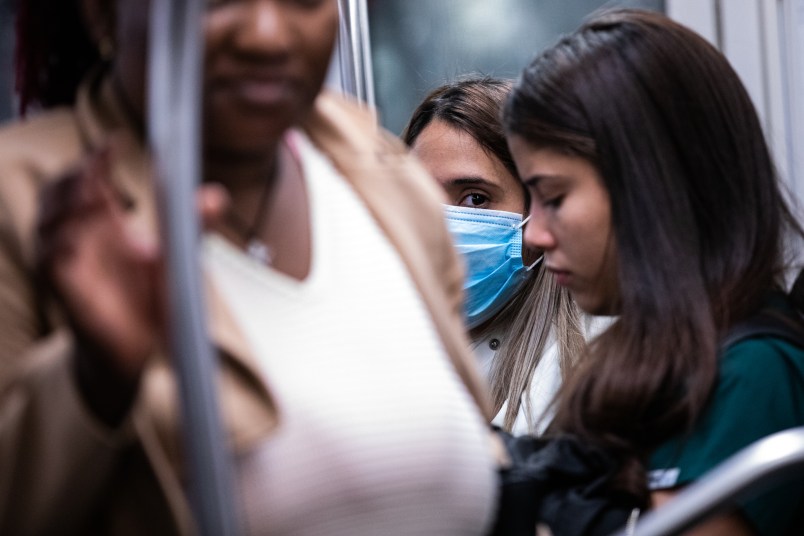President Trump’s failure to declare an emergency over the COVID-19 outbreak could deprive virus-riddled states of needed resources as the pandemic continues, a former FEMA chief told TPM.
An emergency declaration could open up much-needed financial and material assistance to overflowing hospitals and strained state resources as local jurisdictions struggle to cope with the ballooning epidemic.
“The first thing is the financial support that the states will need if the virus reaches a crisis point,” Craig Fugate, FEMA administrator from 2009 to 2017, told TPM. “FEMA needs to be ready to go.”
The Washington Post reported on Monday that Trump was still considering declaring an emergency under the 1988 Stafford Act, but it’s not clear if and when that will take place or the geographic scope the declaration would cover. Politico reported on Wednesday that Trump was opposed to the idea out of concern that it would contradict his message that the virus is comparable to the seasonal flu.
The Politico report suggested also that there was “no deadline” for a decision on the declaration, and that Trump’s adviser and son-in-law Jared Kushner would have the final say after conducting research.
Weeks after the first U.S. cases of the virus and with other developed countries struggling to contain the disease, President Trump has yet to declare an emergency under the Stafford Act, which opens up the full breadth of the federal government’s powers to assist states that are struggling with local disasters.
The law has most frequently been invoked to cover hurricanes or mass flooding, allowing regional responses to handle crises like Hurricane Katrina.
But the coronavirus outbreak, Fugate pointed out, threatens FEMA with something new: a truly national crisis occurring in every state.
The biggest outbreaks in the country have so far occurred in Washington, California, and New York, though 35 other states have reported cases with a total of 938 people diagnosed and a death toll of 31, according to the CDC.
But out of the three states with larger outbreaks, only Washington so far has shown signs of strain on its hospital facilities. The state’s top public health official told TPM on Tuesday that it was waiting for the Trump administration to declare an emergency, allowing the state to petition for changes to Medicaid that would help alleviate the flood of patients at its hospitals.
“If all the states are impacted, there’s gonna be finite capability,” Fugate said. “So a lot of this would be beyond what HHS and the CDC already provide.”
Federal emergency declarations exist to supplement states when they are unable to meet the needs presented by a crisis. A federal emergency declaration can be triggered in part once it becomes clear that the state has “to do extraordinary things beyond what their existing resources can support,” Fugate said.
Fugate told TPM that the government had developed a plan during the spread of the H1N1 virus in 2009 for how to respond in the event of a mass outbreak across the country. President Obama declared the virus – known as swine flu – a national emergency in October 2009.
In reality, the spread of the virus was limited, and Fugate never had to implement what he described as a “blueprint.”
“During H1N1, the question that we had was, ‘if we’re gonna use an emergency declaration, which is ultimately the decision that was made, if it got that bad, how do we staff all the states, territories, and federally-recognized tribes simultaneously?” Fugate asked. “But we never got to the point where the system was so overwhelmed that we had to do this.”
He explained that FEMA would likely offer a mixture of options to the states. Part of that would be financial help, aimed at reimbursing state governments for excessive costs they took on to respond to the crisis.
Other forms of help could be setting up field hospitals, quarantine tents, temporary morgues, and food distribution in areas where logistics break down.
Adding that he was skeptical things would deteriorate so far, Fugate said “there’s limited capability to do feeding and other supplying – we can do it, but not every state simultaneously.”
“There’s a question of what few supplies would go where, but the primary thing would be the financial reimbursements to the states for their extraordinary costs,” he added.
Fugate went on to say that FEMA could also cover “civil service overtime” and contractors hired to take care of “disruptions in supply chains” – that would fall under the category of reimbursements.
The problem at the current moment appears to be one of communication, Fugate said. The White House typically waits for governors to ask for assistance, while also letting them know what is available.
It’s not clear if that has occurred in the current case.
A spokeswoman for Washington state’s emergency management department, still the most heavily hit, told TPM that the state was “having discussions but no request has been submitted yet” for a Stafford Act declaration.
For Fugate, the outbreak could be the first real test of the government’s ability to respond to a truly national crisis.
“Some of these questions have never been asked,” Fugate said. “I think were gonna find out what the programs can and can’t do once we actually implement them.”







This is now beyond goddamned farce.
So there’s an emergency at the border but let’s ignore a real one.
It’s a complete dereliction of duty on Trump’s part.
“…before describing Trump as ‘authentic’, ‘refreshing’, and ‘a guy who’s not afraid to shake things up’.”
Republican presidents just love to kill americans, don’t they.